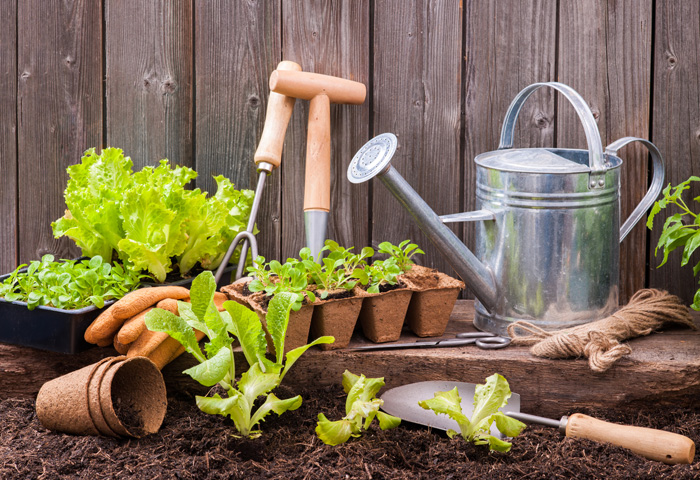Judging by the spaces in our greenhouse and fruit tree selection I would say everybody, and their dog are planting something this year. While gardening has many benefits, I’m afraid for those who jumped on the bandwagon but are not committed to finishing the process. Once the garden is planted there still a lot of work to do. Managing your garden will be the make-or-break point of success.
If you have not planted out your plants yet and are storing them indoors, please beware of specific watering needs. It is best… or should I say required that a plant is watered heavily and then left to dry out. If the ground is always soggy it is too wet. This often shows up with a continuously dark damp look on top and even a bit of green colour. If that has happened, you may be too late. Once your plants are in the garden you may want to either water with a hose along a row or put up a sprinkler. I would suggest soaking the ground well for a couple hours for the sprinkler. Watering with a hose is often not enough as the ground all around is dry and absorbs much of the moisture. Again, watering enough and letting the soil air out is an important point. Having said that I have to warn people who are going to let their plants wilt from not enough water. That would be going too far on the pendulum. As a side note Tomato plants are very fickle towards sprinkling as they do not like having the pathogens spla
shed back up onto the leaves and prefer to be hand watered.
The number two pitfall to avoid. Do not let the weeds get ahead of you. It’s very demoralizing. Tilling between the rows and weeding weekly is best. This is probably the least rewarding work. But it’s got to get done or your plants will get choked out and you won’t have a successful crop.
I will have to back peddle because soil is actually the most important place to begin. If you’re planting into near concrete or almost no topsoil your plants will struggle. Root development is challenging and hard soil. Composter Organic matter makes for good root growth. Old manure helps with nutrients oh, this is all hindsight if it’s already planted. Second best would be to fertilize. This can be done either through water soluble / granular mined fertilizer or a natural fertilizer. The granular fertilizer will kick in fast and is very effective. knowing how to use it is important. Too much of a good thing is a Bad Thing plants can be burnt by the high nitrogen toxicity. On the flip side natural organic fertilizers slow-release and may not have enough to produce the crop you are hoping for in our short season. You want to fertilize or something because it will increase this year yield.
One more point of hindsight. If you’re trying to grow a garden in the shade… Good luck. Garden plants need a minimum of eight hours of sunlight. If trees are nearby it may not just be the shade but also the nutrients and water being stolen by the roots that can be a major thief of your garden dreams.
You may find pests are going to be an issue. There are four legged pests and there are six-legged pests. Animals such as moles can cause a lot of root damage on potatoes carrots parsnips and beets. Rabbits can cause damage on almost anything that they’re interested in. Deer are also an issue for many varieties. The solution to rabbits and deer would be a type of fencing. We’ve often used Garden fencing also known as stucco wire. We actually sell it by the foot if you’re looking for small or large amounts. 58 in in height most deer are not interested. Mice can also cause damage to cucumbers or carrots at ground level. Only solution I know on that is a cat or mouse poison.
I hope my next tidbit of information will not be necessary this year. We are almost through the frost season. Covering plants when the temperature looks like it will be + 3 or less is a very good idea. You can use cardboard boxes and towels or picnic blankets. Do not use just plastic because it actually attracts the frost. Plastic with a blanket over it actually traps the air temperature from the ground and insulates insulation which is good. You may need that information around September 5th to 25th as well.
I can’t even begin diagnosing all the challenges from insects. But I would not worry about this until you see something going wrong there’s not a lot to prevent but more that you can do once you notice them. Every year is different based on weather environment and insect counts.
Being in your garden and observing is your greatest Ally. You will notice when things are struggling. It’s often catching Things Early that helps the most. Since it looks like we’ll have a little bit more time in our backyards it would be good investment after having planted. Happy gardening, I hope you get a great crop.




